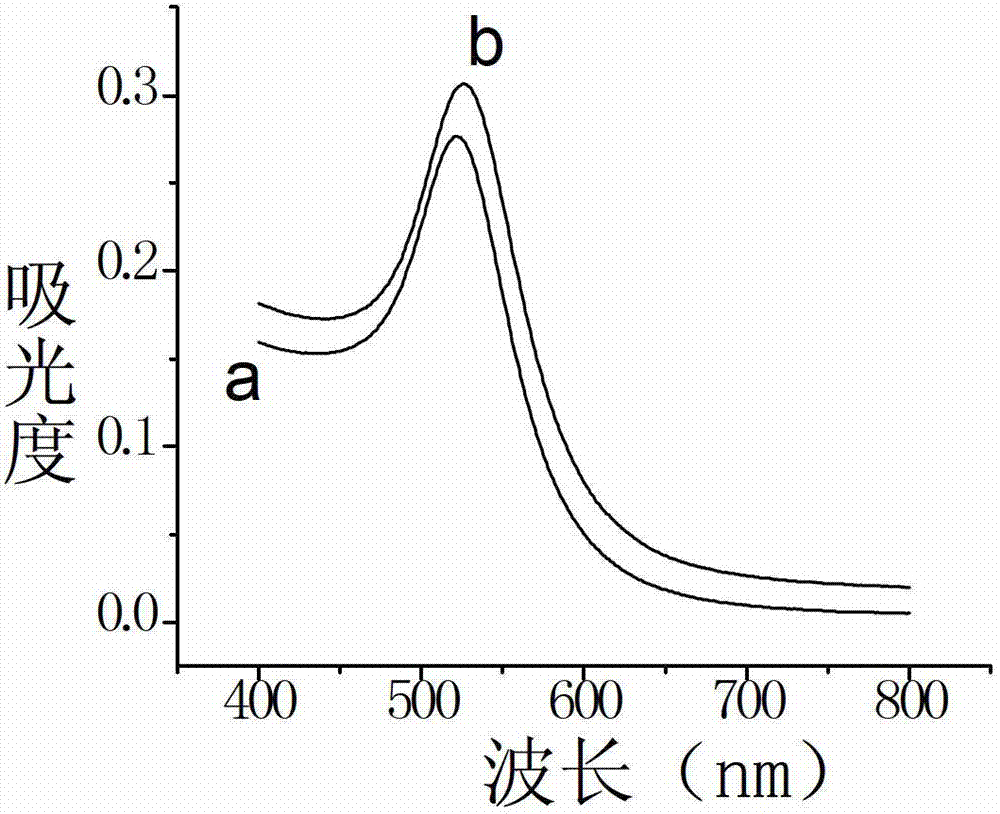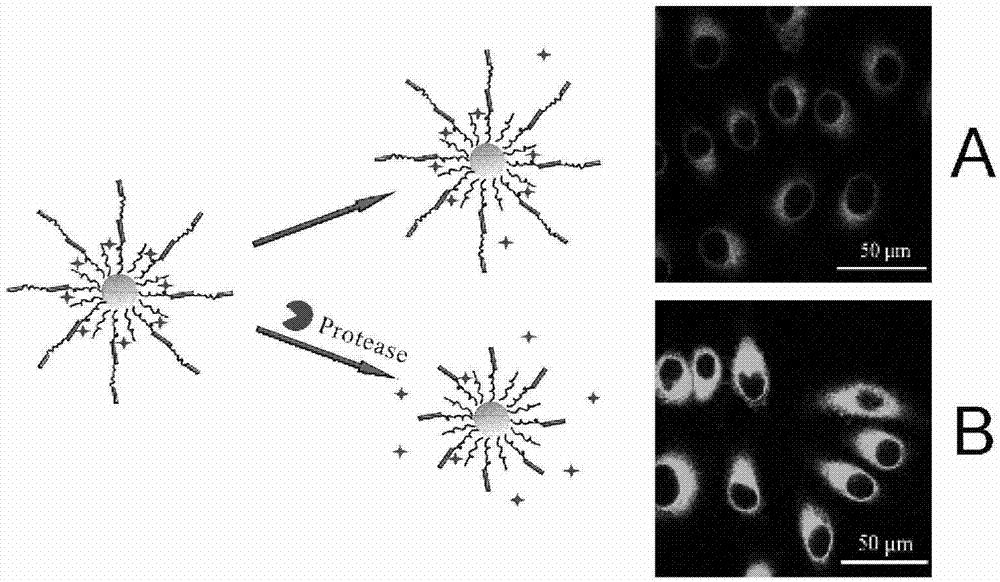Synthesis method of polypeptide-nanogold particle drug carrier
A synthesis method and nano-gold technology, applied in the field of biomedical materials and nanometers, can solve the problems of limited application and poor biocompatibility of small organic molecules, and achieve the effects of controlled release, low toxicity and easy promotion.
- Summary
- Abstract
- Description
- Claims
- Application Information
AI Technical Summary
Problems solved by technology
Method used
Image
Examples
Embodiment 1
[0029] provides a polypeptide — Synthesis method of nano gold particle drug carrier. First, gold nanoparticles with a particle size of 20 nm were prepared by reducing chloroauric acid with sodium citrate; the peptide sequence used was DDNNLAC, namely Asp-Asp-Asp-Asp-Asn-Leu-Ala-Cys (SEQ ID NO1) and DDDD(PPG ) 2 LVPRGS (PPG) 3 G is
[0030] Asp-Asp-Asp-Asp-Pro-Pro-Gly-Pro-Pro-Gly-Leu-Val-Pro-Arg-Gly-Ser-Pro-Pro-Gly-Pro-Pro-Gly-Pro-Pro-Gly- Gly-Cys (SEQ ID NO2) mixture, the molar ratio of the two polypeptide molecules is 1:1 to obtain a polypeptide mixture; this polypeptide mixture is added to the gold nano solution with a particle size of 20 nm, so that the molar concentration of the gold nano solution 10 μM, the total molar concentration of the peptide is 1 mM (the molar ratio of nano-gold and peptide is 1:100), shake for 10 min, centrifuge at 12000 rpm, discard the supernatant, and add the same amount of PBS buffer as the supernatant (pH7.4), and finally synthesized the ...
Embodiment 2
[0033] The encapsulated drug molecule is 2 mM paclitaxel, and the total molar concentration of the polypeptide is 3 mM, in which the peptide — The molar ratio of gold nanoparticle complexes to drug molecules is 1:300). Other steps are with embodiment 1.
Embodiment 3
[0035]The total molar concentration of the polypeptide was 3 mM, the concentration of BODIPY was 3 mM, and the reaction was allowed to stand at room temperature for 1 h. Other steps are with embodiment 1.
[0036] 1 mL, 200 nM peptide — The gold nanoparticle drug carrier was mixed with the culture medium and then added with 1×10 5 cells in a culture dish at 5% CO 2 , reacted at 37°C for 2 h. Wash 3 times with PBS, remove the supernatant, and finally add PBS buffer. Cell fluorescence was observed by confocal microscope, and the fluorescence intensity of cells induced by enzyme cleavage was significantly higher than that of control cells. The results are shown in the appendix image 3 .
[0037]
PUM
| Property | Measurement | Unit |
|---|---|---|
| Particle size | aaaaa | aaaaa |
Abstract
Description
Claims
Application Information
 Login to View More
Login to View More - R&D
- Intellectual Property
- Life Sciences
- Materials
- Tech Scout
- Unparalleled Data Quality
- Higher Quality Content
- 60% Fewer Hallucinations
Browse by: Latest US Patents, China's latest patents, Technical Efficacy Thesaurus, Application Domain, Technology Topic, Popular Technical Reports.
© 2025 PatSnap. All rights reserved.Legal|Privacy policy|Modern Slavery Act Transparency Statement|Sitemap|About US| Contact US: help@patsnap.com



